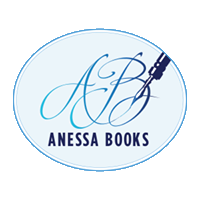 Do you plot each scene in your book? Do you think about it beforehand? Know what you’re going to write? Or do you just generally know what’s got to happen and let it go allowing the characters to do what they will?
Do you plot each scene in your book? Do you think about it beforehand? Know what you’re going to write? Or do you just generally know what’s got to happen and let it go allowing the characters to do what they will?
You all know by now that I’m a great advocate of plotting. And yes, I do actually plot down to the scene, however, I don’t do it until I’m ready to actually sit down and write. Before that, I’ll only know generally what needs to happen – because I’ve plotted out the whole book. But when I am ready to write a particular scene, depending on how well I know what’s going to happen, I’ve got a few different tools I’ll use to get myself going.
If I know exactly what’s going to happen and have played the scene in my mind, I may simply just sit down and write, doing no plotting or planning whatsoever. That is, to my mind, the ideal situation. It doesn’t happen all too often, but sometimes times I’ll have had that scene play itself out like a movie in my head so there’s really nothing more I need to do than transcribe it as I saw it.
If I’ve got a really good idea of what’s supposed to happen I may simply write down the main points:
POV Character
Their Goal for the scene
The Conflict
The Major Turning Point
And if I need it, a paragraph description of what happens.
If it’s a more complicated scene with other main characters I may pause after noting the above points and think more about what the other characters are thinking and feeling about what’s taking place. Sometimes I may just need to know what’s going through their mind at the beginning and then let the scene play out, sometimes if things are even more complicated, I may also want to know how they feel about the main action of the scene and how it impacts them.
Sometimes, if my POV character really has to do something important, I may go through a list of how they’re going to do it and what the consequences of those attempts are.
If I really have very little idea of what needs to happen in a scene, I’ll go through one of my scene worksheets where I will write down the character’s goal for the scene and mine, as the author (do I want the reader to get to know the character better? Do I need the character to try harder to move toward their goal or away from it unwittingly? Etc).
I’ll think about the overall story question and whether the scene moves the story toward its resolution or away from it. I’ll want to detail how this scene moves the reader forward into the next scene. And finally, I definitely want to know what is at stake in this scene. What is the urgency? Why do we need this scene at all?
If I can’t answer that question, I shouldn’t be writing the scene.
If I’m really stuck while planning a scene, I might do what I used to do when I was a newer, younger writer and pre-write the scene. It used to be that I couldn’t write a scene without pre-writing first. To pre-write, I’ll tell myself the story. I may detail just what the characters have been going through and how it relates to how they think of themselves (their belief, how they view the world and themselves), and what they want for themselves (their goal).
If I can get myself into the character’s deep thoughts, into their mind—if I can become the character—the scene I’m going to write will be deeper, better, and more honest.
Usually, pre-writing starts out with simple expository writing—me telling myself the story. And it almost always ends with the writing of dialogue, action, and description—ie, actually writing the scene.
If you’re having trouble writing a scene, or just need a little bit of help to jump you into your writing, start with the broadest strokes of scene plotting and then get more and more detailed as necessary. Eventually, that scene will come out of you, and the deeper you can get into the mind of the POV character the better the scene will be.
Please remember that I’m always available if you need help with your writing! Find out more about my book coaching services at https://meredithbond.com/book-coaching.
